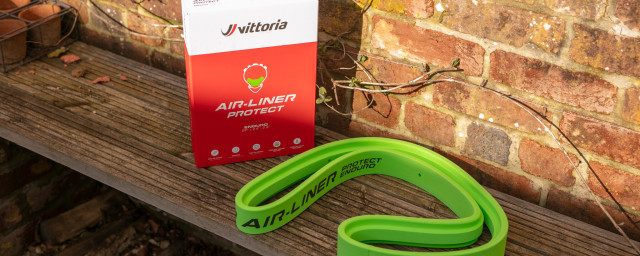Cycling shoes: everything you need to know

Despite being one of the most important purchases you'll make as a cyclist, cycling shoes are often overlooked - especially by beginners. Once you start venturing into disciplines such as bikepacking, for example, you'll soon realise that basic trainers or flat shoes don't really make the cut and that something from the best gravel bike shoes and best mountain bike shoes are better considerations.
In the diverse world of cycling, there are many shoe options available. If you are a woman, it might seem intuitive to search for women-specific cycling shoes, as some of the options are targeted at different genders - but, increasingly, shoe brands are actually steering away from gender-specific shoes. This is not only to be more inclusive but because research is showing gender isn't a defining factor in cycling shoe design - although it might help you find the right size.
Ever since we were young we've learned to go to the shoe shelf that is targeted to our gender. It doesn't really define your foot shape, though. Even if we’ve been led to believe that women have small, dainty and narrow feet - it’s seldom not the case. So how should you go about finding the right cycling shoe?
We chatted with some industry experts about the topic. Read on to find out.
Do you need women-specific shoes?
Some brands have left gender out of the shoe model name, some still have it in. What the “women” in the cycling shoe really means is that the last of the shoe is tailored for a specific fit.
Talking to Lauren Ryan, the Lake Brand Manager at Moore Large, about the research that Lake has done, it quickly became apparent that gender isn't really the primary factor in cycling shoes.
What differentiates them, then? From speaking with experts, it is controversial whether women’s shoes are actually narrower or wider - so in some cases, the only difference is colour and size range. In the research that Lake has done, though, they've found that women have wider toe areas, which has resulted in the women-specific Lake models having a wider toe box.
For other brands, going unisex has been the way to offer everyone what they want - and only stock unisex models in a wide range of sizes. Fizik is one of those brands.
"Before everything went unisex, when we used to have women's and men's models - well, colours - there were a lot of focus groups globally. It was really interesting when you asked women what they want. They all went 'I just want the same shoes as the men's, and I want the same choices. We don't want a pink and a baby blue.' Basically, they didn't want anything that could be associated with women," Hannah Wilson, Fizik Brand Manager at Extra UK says.
But Wilson admits that it's sometimes hard to communicate unisex range to women: "It's not a men's range that women can buy, it is an actual unisex range," she emphasises.
We've now ruled out the real need for women-specific cycling shoes, but how do you pick your dream kicks then? Let's look at some aspects to consider.
The purpose of cycling shoes
Regardless of the style of the shoe, the best shoes are those that fit you and this applies to cycling shoes as much as your running or walking shoes. But before you go and see the hundreds of different shoe options in the market, it’s important to define what you’re looking for in the shoe.
“What are you going to do in those shoes? What is your riding style or cycling discipline? Road or off-road, long distances or short crits, mainly pedalling or also walking? Priority on performance and its degree of sustainability or comfort? These questions call for different pedals and cleats, a different sole stiffness, configuration of the closure system, and so on,” Carlo Bertante, the R&D Manager Footwear at Fizik, says.
Most off-road shoes come with two-bolt spd cleat attachments, or with a flat sole that is more common in mountain biking and bikepacking circles.
Once you've defined your primary discipline and the demands you have for your cycling shoes, you then have to consider the size, closure system, and sole of the shoe.
How to find the right cycling shoe size?
Sizing is the most obvious aspect of choosing the right cycling shoes. This is where gendered shoes might play a role, as well. Women-specific models usually also come in smaller sizes, starting from 36 or sometimes even smaller.
It’s easy to get your shoe size wrong because size is not necessarily the same across all brands. So rather than looking at the EU, UK or US sizes, it’s a great idea to compare the shoe sizes in millimetres.
As an example, a size 42 Fizik shoe is 270mm long, whereas the same size in Lake shoes is 263.5-266mm long. This might not seem like a big difference, but if you really want to perfect your shoe fit, it’s good to pay attention to the details.
But before you do that, you need to measure your feet. Unless you have a great local bike shop or bike fitter that can do that for you, you can do it at home. Simply place your foot on a piece of paper, trace it with a pen and then measure the length and width of your foot.
This gives you a basis to figure out your perfect cycling shoe size. Next, you might be looking at what kind of pedal interface you prefer - do you want flat shoes, cleats, or shoes that can do both? There are also a lot of differences between the stiffness of the sole, which impacts how efficient the shoes are, but might compromise on comfort if you walk on your bike rides as well.
The importance of the cycling shoe sole
In essence, you have two options in cycling shoe soles: clipless or flat. The choice between the two depends on what kind of riding you do and what you want from your shoe. Flat shoes are more versatile; they can even double up as casual town kicks if you so wish. But could you not just ride your trainers?
"The cycling-specific flat shoes have stiffer soles than your trainers, which results in less fatigue," Hannah Wilson from Fizik says.
While cycling shoe soles are generally stiffer, this varies greatly depending on their intended use. Clip-in shoes tend to have stiffer plastic soles with rubber for good grip. Soles can have carbon fibre inserts through their length or alternatively just in just the midsole to boost stiffness. Cross-country mountain bike and gravel cycling shoes usually have a stiff sole for good power transfer, whereas other mountain bike shoes have more flexible footbeds, which help absorb impact while improving all-around comfort.
Flat shoes, as the name suggests, have no cleat recess and closely resemble a normal shoe. The soles are generally more flexible and allow more ‘feel’ on the pedals and the compatibility between the shoe and the flat pedal is essential for optimal grip. The shoes should be grippy and match your pedals perfectly, but if they're too grippy, adjusting your foot mid-trail becomes tricky.
However, flat shoes are great for beginners as, unlike clip shoes, riders can quickly take their feet off the pedals without having to worry about leaving a clip pedal's mechanism. This feature is also handy when the conditions get particularly loose or muddy, extending their use to those who are more experienced. Flat shoes also tend to stop riders from picking up bad habits as they progress their technique.
Pedalling efficiency
Pedalling efficiency is important especially if you want to race, and in most cycling racing you see riders with clipless shoes. But when it comes to science around clipless pedals and shoes, it’s controversial whether you actually gain any advantage. Studies have indicated that gains from using clipless shoes are really marginal, and only measurable in high-intensity efforts; when you’re climbing or sprinting.
But science aside, it is clear that if you ride clipped in, the chance for your feet to slip off the pedals is much smaller. They don't always don't make a great walking shoe, but as most off-road riders ride two-bolt cleats, which sit in a recess, the cleat barely has contact with the ground when you’re off the bike.
But the increased off-bike comfort and grip of flat mountain bike shoes might be your preferred option when you regularly get off your bike to hike up steep climbs, or on bikepacking trips when you use your cycling shoes to also walk to the pub in the evening.
If you ride with clipless pedals, and hence have cleats on your shoes, you have one more thing to get right in order to avoid pain and issues - cleat placement.
Even if you have the best mountain bike pedals on your bike, in order for your pedalling to be effective, the cleat needs to be placed far enough back on your shoe. Some shoes have limited cleat adjustment, so make sure you look at this before making a decision.
Arch support in a cycling shoe
Arch support is something of a controversial topic in cycling shoes. Some say that you don’t need any as your foot does not rotate in the same way as when you walk or run, but some, such as bike fitter Steve Hogg, advocate arch support is essential for having comfortable feet and saddle area as well. Most cycling shoes don't come with any arch support, so it's worth looking at replacing the thin, factory insole with something more supportive.
We’ve come a long way from the days when we spent most of our waking hours on our feet, which left them very stable and strong. Nowadays, instead, most of us spend our days sitting down. The arch on our feet is essential in sending the rest of our legs and body a signal of what is going on at the ground level.
If the arch doesn’t contact the ground (or the sole) properly, this signal is hampered and the issue radiates upwards all the way to the hip.
The solution to this is to add arch support for your cycling shoes. If you have the cash, you can opt for custom insoles, or in case you don’t, there are cheaper, easily adjustable options such as the G8 Pro Series 2620 insoles.
How long should your cycling shoes last?
There is no determined shelf life as such for cycling shoes - because it all depends on how much you ride and in what conditions. Fizik's Carlo Bertante highlighted how some of their test riders will destroy shoes in one month, while others use the same pair for years.
Washing your shoes with water when they're very dirty, and then letting them air dry makes them last a lot longer. If your shoes have a leather upper, that needs special attention and with clipless shoes, you need to remember to keep an eye on the sole and ensure you know when to change your cleats.














